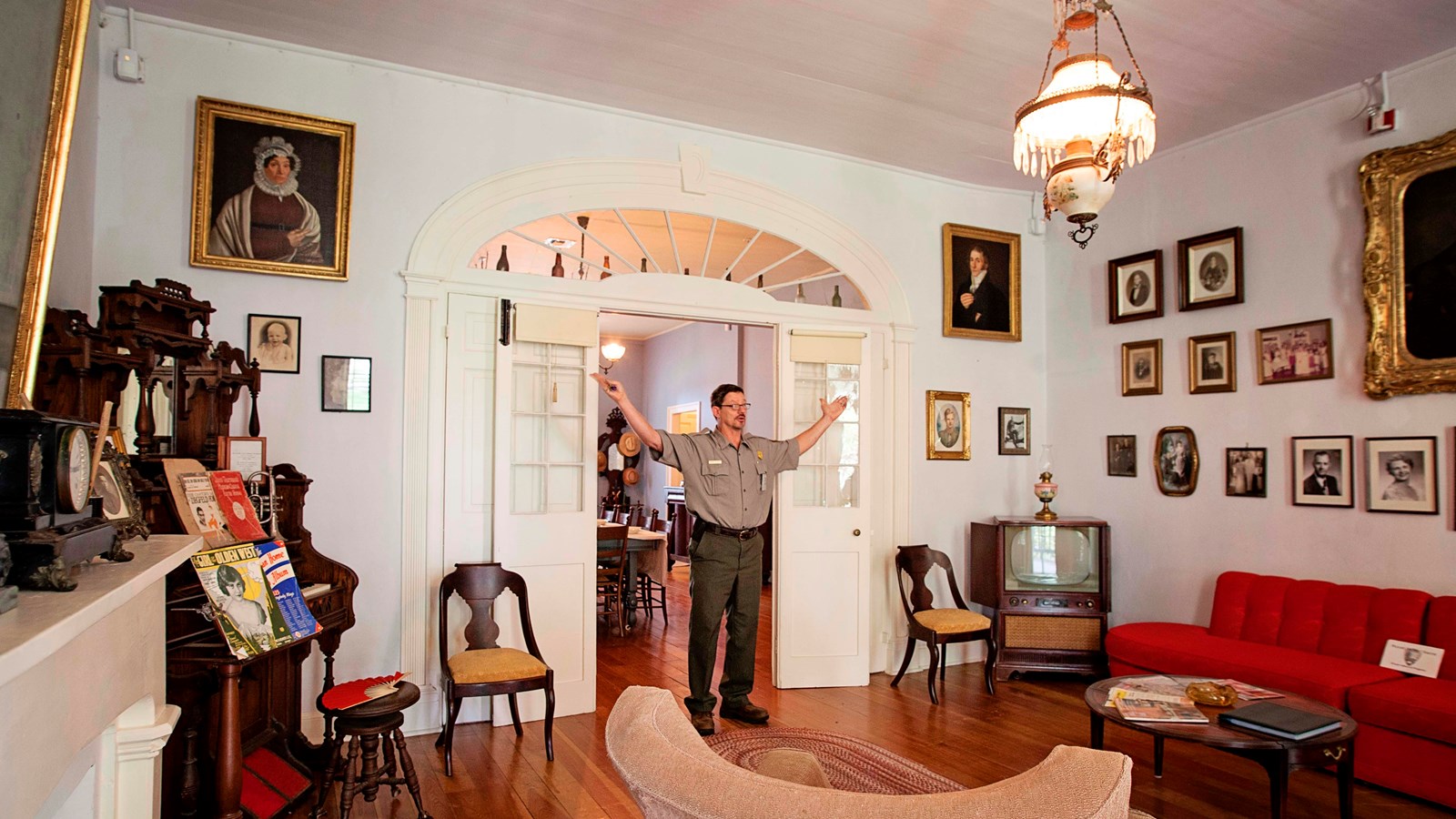Last updated: September 3, 2023
Place
Oakland Main House Parlor

NPS
Quick Facts
Location:
Natchez, Louisiana
Amenities
3 listed
Accessible Rooms, Historical/Interpretive Information/Exhibits, Wheelchair Accessible
The house is a time capsule of the Prud’homme family’s life on the plantation from the 1820s to the 1960s. The invention of the cotton gin in the early 1790s made growing cotton profitable, but it dramatically increased the use of enslaved labor to produce that wealth. In 1795 the enslaved population was 38, but in less than fifty years it had nearly quadrupled to 145 persons. By the Civil War, nearly 160 enslaved individuals labored at Oakland. African American labor sustained Oakland Plantation and contributed to the wealth of the Prud'homme family.
The paintings and photographs you see around the parlor are many generations of the Prud'homme family and their relatives. The man in the portrait to the right of the double doors is the founder of the plantation, Emanuel Prud’homme. The man in the large portrait on the side wall is Ambrose LeComte II, founder of Magnolia Plantation. His youngest daughter Elise married Jacques Alphonse Prud'homme I, who later inherited Oakland. By 1860, Ambrose LeComte II enslaved more people (235 individuals) and produced more cotton than any other Natchitoches Parish plantation.
Music was an essential part of education for the wealthy, and many of the Prud’homme women were accomplished musicians. However, there were many talented self-taught musicians on the plantation, including Dominique Toussaint. Born enslaved on Oakland, Toussaint was a skilled carpenter who likely was involved in building the house. In addition, he was an accomplished fiddler who played for dances.
The paintings and photographs you see around the parlor are many generations of the Prud'homme family and their relatives. The man in the portrait to the right of the double doors is the founder of the plantation, Emanuel Prud’homme. The man in the large portrait on the side wall is Ambrose LeComte II, founder of Magnolia Plantation. His youngest daughter Elise married Jacques Alphonse Prud'homme I, who later inherited Oakland. By 1860, Ambrose LeComte II enslaved more people (235 individuals) and produced more cotton than any other Natchitoches Parish plantation.
Music was an essential part of education for the wealthy, and many of the Prud’homme women were accomplished musicians. However, there were many talented self-taught musicians on the plantation, including Dominique Toussaint. Born enslaved on Oakland, Toussaint was a skilled carpenter who likely was involved in building the house. In addition, he was an accomplished fiddler who played for dances.
